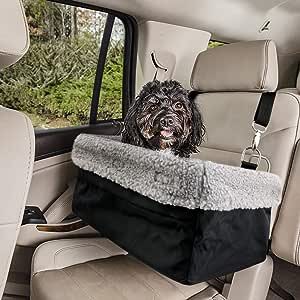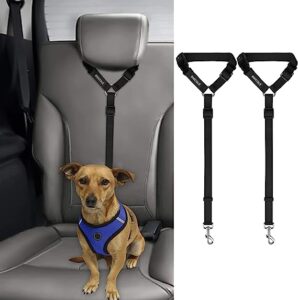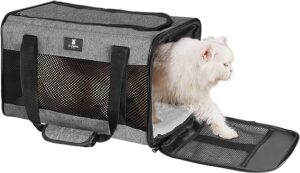Car travel with your pet doesn't have to be stressful. The best thing you can do to keep your pets safe while travelling is to prepare well and manage any areas that might impact their safety in the car. One of the biggest parts of keeping your pet safe during a long car trip is making sure they feel at ease and are abiding by the relevant government rules and regulations for car safety.
How to keep your pet safe during long car trips
Keep your pet restrained
Making sure your pet is restrained is not only key to their safety but yours too.
Restraining your pet can save its life – especially in case of an accident. We highly recommend investing in a good quality pet restraint so if anything were to happen, you’ve done everything in your power to minimise the damage.
To keep your pets safe when travelling, they should be comfortable, yet restrained and not allowed to walk around the car, especially when moving. Cats should be kept in a well-ventilated crate or carrier, and dogs should wear a seat belt or be in a dog carrier or booster seat.
Dr Anne Chester, a chief veterinarian at the RSPCA told the ABC, “Your best bet for restraining travelling dogs: a crate, or a harness that connects to a seat belt. Cats should travel in a crate or carrier, ideally with a lightweight sheet covering three of the sides.”
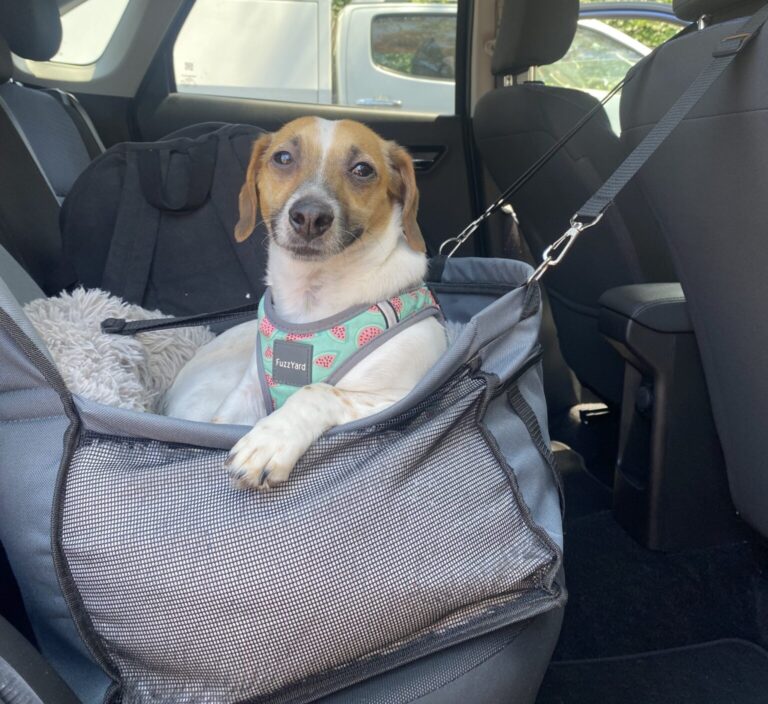
Road rules for travelling with pets
Even if you have the safest car, you must abide by all rules and regulations imposed by your state. Generally, it's against the law for your animal to distract you, and you must be fully in control of the vehicle at all times.
When testing an appropriate restraint for your road trip, ensure that your dog cannot move around in the car. This will prevent you, the driver, from getting distracted and looking back to make sure they’re okay. In NSW, you can be fined and hit with demerit points if your dog is distracting you from the road.
While most dogs love to put their head out the window and feel the wind against their ears, we recommend making sure your restraint is tightly tethered to either the front or back headrest to prevent your furry friend from jumping out. They might overestimate how far they can lean out of the window, and fall onto the road, becoming a hazard to themselves and other drivers.
In NSW, driving with an unrestrained dog can land you fines of over $400. Regardless of the consequences of failing to restrain your pet, they can become projectile and seriously injure themselves in case of an accident. If your pet gets injured because you failed to restrain them, you can face up to six months in jail and cop a massive fine of up to $5,500. If that's not reason enough to do all in your power to protect your furry friend, we don't know what is!
Below are some options for restraining your pet during long car trips, so they can be comfortable and safe.
Booster seat
The booster seat attaches to the front and/or back headrest, and clips onto the dog’s collar or harness. My dog finds it much more comfortable to sit on his bed while on the booster seat, so he has somewhere to rest his head and have a snooze during the road trip. Most booster seats are wide and deep enough to squeeze in your dog’s bed, depending on the breed and how big and luxurious their bed is.
Seatbelt
Another way to restrain your dog during road trips is by using a seatbelt clip. This clip attaches to your dog's harness or collar and is either attached to the headrest or clicks into the seatbelt buckle with a tongue attachment.
Carrier
While these carriers aren't good options for our bigger furry friends, they’re affordable and safe for cats and small dogs (under about 7kg).
Carriers can be a source of anxiety, especially in cats, so try following our tips for forming positive associations below.
Form positive associations with car or carrier rides
Does your dog or cat pant, shake, whine, or exhibit destructive behaviour while in or around the car or their carrier? They may be showing signs of stress thanks to negative association. One of the ways our pets learn is by association. My dog knows that whenever I go to the cupboard where his food is, it's dinnertime. Your pet might also associate their leash with going for a walk, or the jingle of your keys with you, their owner, returning home from work.
While these may be positive, pets can also make negative associations just as quickly as positive ones. If you have a reactive dog, you know that sometimes just the sight of another dog, a person, or a child is enough to trigger a negative association in their brain and cause a bout of fear.
If your dog or cat has had an unpleasant experience in the car or carrier, this might cause a negative association. Every time the carrier is put in front of them, or they are coaxed into the car, they are reminded of that single unpleasant experience however long ago.
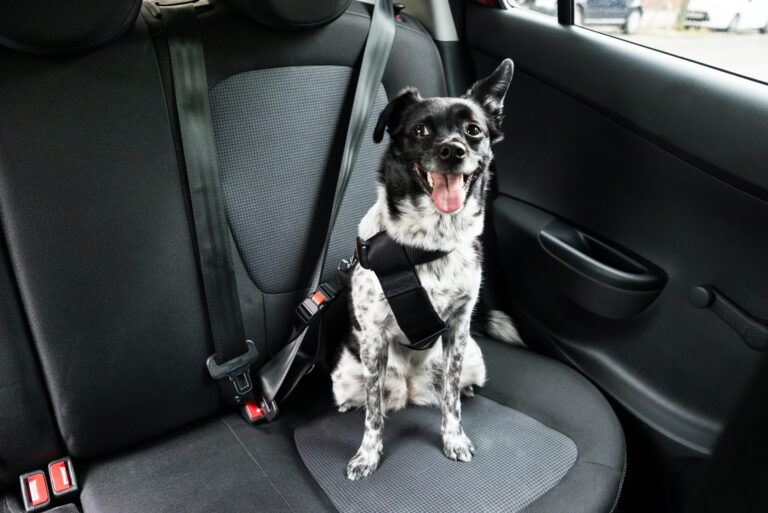
The best way to change their negative association is to change it into a positive one. This is called classical conditioning.
Forming a positive association with the car or carrier can be done by:
- Offering mental enrichment and exercise before the car or carrier ride to keep them relaxed.
- Reward your pet with high-value treats when they’re a good passenger (not their run-of-the-mill kibble – use their favourite treat or one they don't get to have often!)
- Drive to enjoyable destinations like the park or a new walking route – not just the vet.
- Play with your pet around the carrier (if using) and fill it with their favourite blanket, toys, and treats.
- Practice makes perfect. Make sure to reward your pet for good behaviour so they can associate being in their car or carrier with receiving rewards.
Manage motion sickness
Some pets have an aversion to car rides because they are prone to motion sickness or car-related anxiety. Car rides can be an unnerving time for pets, so bring along their favourite toys and bedding and ensure your pet has enough fresh air by winding down the window a tad. If your pet has a habit of vomiting in the car, you might also want to consider fitting your car with waterproof seat covers.
We recommend feeding your pet a small amount of food 3-4 hours before leaving, or feeding them at a rest stop and giving them time to digest before getting back on the road. Sometimes being on the road for a long stretch of time can upset your pet’s stomach, especially if they’re prone to motion sickness, so stop frequently to let your pet stretch their legs and have some water.
We also recommend the Thundershirt Anxiety Jacket (or pressure covering, as its also known). It works in the same way as swaddling a baby or giving someone a hug does, distributing gentle pressure over the back and sides of the chest to ease their nerves. You might be familiar with the way this contraption works if you have a weighted blanket!
Assemble a travel kit
Another way to ensure your pet’s safety on a long car trip is to put together a pet travel safety kit, so you have everything in one place in case of emergency.
- Pet restraint like a carrier, crate, or booster seat
- Collar, harness, leash and/or muzzle
- Comfort items like their favourite toys or blanket
- Poo bags and cleaning items
- Food, treats, dental chews
- Collapsible water bowl
- Medication
- Emergency vet contact details, pet insurance details, first aid items
Final word
There are many ways to ensure your pets safety while on long car trips. Keep your pet restrained in a booster seat, clip, or carrier in the back seat, and ensure they're comfortable. If your pet has car or carrier anxiety or motion sickness, there are a few things you can do to reduce stress, fear, and help them have a happy trip. You can also assemble a travel kit to ensure you cover all bases and keep your pet safe in case of an emergency.

